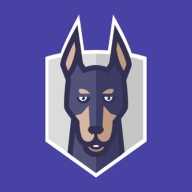

Fugue and Lacework FortiCNAPP compete in the cloud security category, each bringing unique advantages. Fugue appears to lead in pricing and support, while Lacework FortiCNAPP offers comprehensive features that can justify its cost.
Features: Fugue provides robust infrastructure policy enforcement, ensuring secure compliance and simplifying cloud governance. Its secure continuous compliance is a standout feature. Lacework FortiCNAPP delivers advanced threat detection and behavior analysis, offering extensive protection for cloud workloads with a diverse feature set tailored for comprehensive security needs.
Ease of Deployment and Customer Service: Fugue supports straightforward deployment with effective customer service, making onboarding effortless. Lacework FortiCNAPP includes a seamless integration process with more complex configurations; however, its dedicated support assists users in managing these complexities. Fugue’s simple approach aligns with user-friendliness, while Lacework FortiCNAPP's robust support compensates for its complexity.
Pricing and ROI: Fugue's competitive setup costs bring quick ROI by streamlining compliance features and reducing operational overhead. Lacework FortiCNAPP requires a higher initial investment but offers long-term security benefits through its extensive threat detection capabilities, making it appealing for organizations focusing on comprehensive threat visibility.

Fugue is an infrastructure-level cloud operating system. It builds, operates, and terminates cloud infrastructure and services and automates the continuous enforcement of declared infrastructure configurations. Fugue completes the DevOps workflow by automating cloud lifecycle management via enforced and versionable infrastructure as code. Fugue is a single source of truth and trust for the cloud.
Lacework FortiCNAPP provides robust cloud security, combining vulnerability management and multi-cloud insight with user-friendly controls, machine learning detection, and compliance support.
Lacework FortiCNAPP specializes in cloud security by merging machine learning anomaly detection with agent-based vulnerability management to offer detailed alerts and compliance reports. Its comprehensive approach allows continuous monitoring across AWS and Kubernetes, providing insights from an attacker's perspective. The platform offers automation and seamless Slack integration, facilitating collaborative and efficient cloud security management. Users value its ability to handle multi-cloud environments and scan IAC scripts, configurations, and compute nodes across AWS and GCP.
What are the key features?Organizations across sectors leverage Lacework FortiCNAPP for cloud security, focusing on compliance, security posture, and vulnerability management. It is widely used for monitoring AWS and Kubernetes environments, scanning IAC scripts, configurations, and securing compute nodes. It supports multi-cloud security posture management and log ingestion, enabling companies to maintain strong cloud infrastructures without dedicated security layers.
We monitor all Cloud Security Posture Management (CSPM) reviews to prevent fraudulent reviews and keep review quality high. We do not post reviews by company employees or direct competitors. We validate each review for authenticity via cross-reference with LinkedIn, and personal follow-up with the reviewer when necessary.